Question More, Action Knowledge.
Remember, at QMAK, we don’t just teach; we empower. We don’t just inform; we inspire. We don’t just question; we act. Become a Gold Member, and let’s unlock your child’s full potential, one question at a time.
![]()
Have you ever watched a tree bend in strong winds, only to return to its original position when the wind dies down?
Or noticed how metals can be shaped under pressure but need cooling to maintain their new form?
All around us, systems demonstrate this fundamental pattern of stress and recovery – a cycle of pressure and release that’s essential for both stability and growth.
The stress-recovery cycle is a fundamental pattern where systems experience pressure or demands (stress) followed by periods of restoration and repair (recovery).
This cycle appears in natural, technological, social, and organizational systems.
These cycles typically involve three key phases:
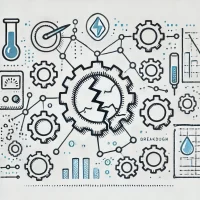


Let’s explore how this pattern manifests across various systems:
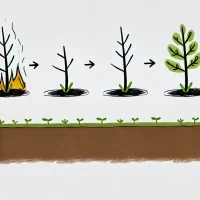
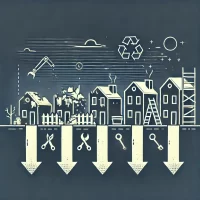
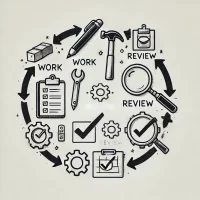
This pattern is crucial for several reasons:
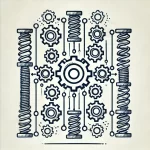
System Resilience: Understanding how systems handle stress helps build stronger, more adaptable systems
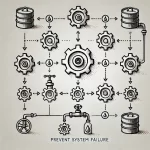
Resource Management: Knowing when to push and when to allow recovery prevents system failure
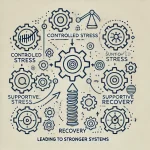
Growth and Development: Controlled stress followed by recovery often leads to stronger systems
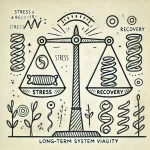
Sustainability: Balancing stress and recovery ensures long-term system viability
When systems don’t get proper recovery time, various problems can emerge:

In Natural Systems:
In Technical Systems:
In Social Systems:

Remember, every system, whether natural, technical, or social, needs a balance of stress and recovery to function optimally and grow stronger.
Too much stress without adequate recovery leads to breakdown, while too little stress can result in stagnation. The key is finding and maintaining the right balance for each specific system.
Inside Out provides a brilliant visualization of the stress-recovery cycle through its innovative portrayal of an 11-year-old girl’s emotional system.
Through Riley’s journey of adapting to a new city, students witness how stress disrupts established systems – represented by Joy and Sadness being separated from Headquarters – and how recovery requires reintegrating and rebalancing these disrupted elements.
The film’s clever personification of emotions demonstrates how systems under stress need both breakdown and reconstruction to achieve greater resilience.
As viewers follow Joy’s realization that Sadness plays a vital role in emotional health, they learn how recovery isn’t simply about returning to a previous state but about building more sophisticated systems that can handle future challenges.
Through the metaphor of Riley’s emotional control center, the film shows how stress can serve as a catalyst for necessary system evolution, provided proper recovery mechanisms are in place to support adaptation and growth.
Verse 1:
Like a tree in stormy weather
Bending, swaying, holding steady
Every system needs to know
When to yield and when to grow
Pre-Chorus:
Nature teaches through the years
How the strongest oak appears
Not from standing rigid tall
But learning when to bend through all
Chorus:
Bend and Return like the ancient trees
Flow with pressure, then release
Strength lies not in standing still
But knowing how to bend until
The storm has passed, then rise again
Bend and Return, that’s how we mend
Verse 2:
Rivers reshape after floods
Metals cool to form their good
Markets rise from every fall
Recovery heals us all
(Pre-Chorus)
(Chorus)
Bridge:
Between the pressure and the peace
Lives wisdom in the sweet release
Systems learn through stress and rest
How bending makes them truly blessed
(Chorus)
Outro:
Bend and Return, now we see
The strength in flexibility
Verse 1:
Like a rubber band that bends and sways
We stretch and grow through challenging days
But wisdom lies in nature’s way
The art of knowing when to stay
Pre-Chorus:
Body signals, mind alerts
Time to push or time to reverse
Listen to the rhythm true
Of what your system’s telling you
Chorus:
Stretch and Release, that’s how we grow
Push and rest, ebb and flow
Building strength through giving space
Stretch and Release, find your place
Verse 2:
Athletes know this ancient art
Study hard, then let it part
Creative minds need time to rest
Balance makes our systems best
(Pre-Chorus)
(Chorus)
Bridge:
Between the strain and sweet release
Lives the strength we need to reach
Higher goals and deeper peace
When we honor both with ease
(Chorus)
Outro:
Stretch and Release, now we know
The natural way to heal and grow
Remember, at QMAK, we don’t just teach; we empower. We don’t just inform; we inspire. We don’t just question; we act. Become a Gold Member, and let’s unlock your child’s full potential, one question at a time.